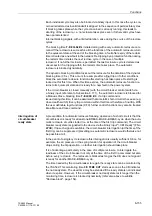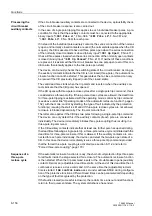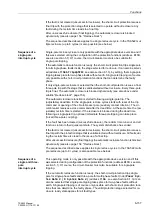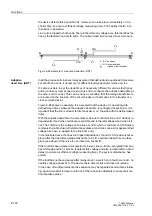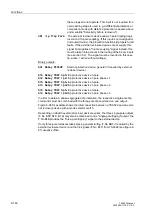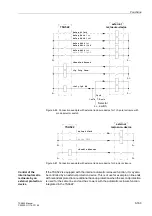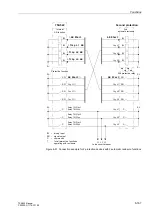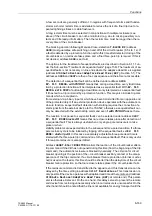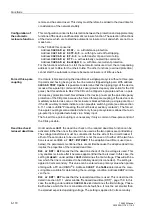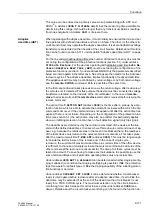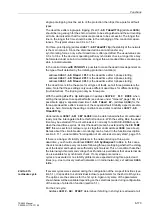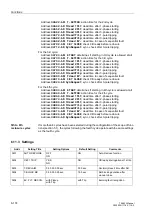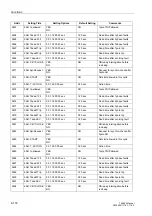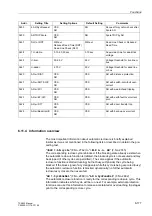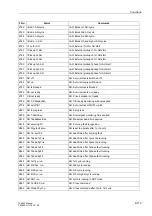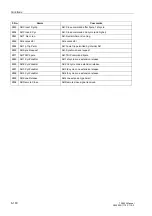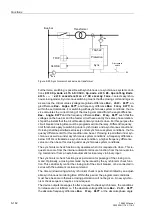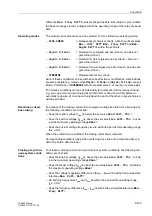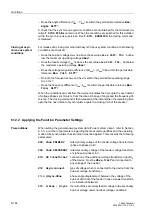
Functions
6-169
7SA522 Manual
C53000-G1176-C119-2
A few seconds are generally sufficient. In regions with frequent storms and thunder-
storms a shorter reclaim time is advisable to reduce the risk of a final trip due to re-
peated lightning strikes or cable flashovers.
A long reclaim time must be selected in conjunction with multiple reclosure (see
above) if the circuit-breaker can not be monitored (e.g. due to missing auxiliary con-
tacts and CB–ready–information). Then the reclaim time must be longer than the re-
covery time of the circuit-breaker.
The blocking duration following Manual–Close–detection
(address
) must guarantee safe switching on and off of the circuit-breaker (0.5 s to 1 s). If
a fault is detected by a protection function within this time after detected closing of the
circuit-breaker, no reclosure takes place and a final three-pole trip is issued. If this is
not desired, address
is set to
.
The options for the treatment of sequential faults are described in Section 6.11.1 un-
der the Sub-section "Treatment of sequential faults" (page 158). The treatment of se-
quential faults is not necessary on line ends where the adaptive dead time is applied
(address
$XWR5HFORVH
=
$GDSWLYH'HDG7LPH$'7
, Section 5.1). The
addresses
are then of no consequence and therefore not accessible.
The detection of a sequential fault can be defined under address
means that, during a dead time, every
fault detec-
tion
by a protection function will be interpreted as a sequential fault. With
a fault during a dead time is only interpreted as a sequential fault
if it has led to a
trip command
by a protection function. This may also include trip com-
mands which are coupled in
from external via a binary input or which have been transmitted from an opposite end
of the protected object. If an external protection device operates with the automatic re-
closure function, sequential fault detection with starting requires the connection of a
start signal from the external device to the 7SA522; otherwise a sequential fault can
only be detected with the external trip command even if
was set here.
The reaction in response to sequential faults can be selected under address
means that no reclosure takes place after detection of
a sequential fault. This is always useful when only single-pole reclosure is to take
place or when
stability problems are expected due to the subsequent three-pole dead time. If a three-
pole reclose cycle is to be initiated by tripping of the sequential fault, set
. In this case a separately adjustable three-pole dead time is
started with the three-pole trip command due to the sequential fault. This is only useful
if three-pole reclosure is also permitted.
monitors the reaction of the circuit-breaker after a
trip command. If the CB has not opened during this time (from the beginning of the trip
command), the automatic reclosure is blocked dynamically. The criterion for circuit
breaker opening is the position of the –circuit-breaker auxiliary contact or the disap-
pearance of the trip command. If a circuit-breaker failure protection (internal or exter-
nal) is used on the feeder, this time should be shorter than the delay time of the circuit-
breaker failure protection so that no reclosure takes place if the circuit-breaker fails.
If the reclosure command is transmitted to the opposite end, this transmission can be
delayed by the time setting in address
. This transmission is
only posible if the device operates with adaptive dead time at the remote end (address
$XWR5HFORVH
=
$GDSWLYH'HDG7LPH$'7
at remote end). This param-
eter is otherwise irrelevant. On the one hand, this delay serves to prevent the remote
end device from reclosing unnecessarily when local reclosure is unsuccessful. On the
other hand it should be noted that the line is not available for energy transport until the
Summary of Contents for siprotec 7SA522
Page 20: ...7SA522 Manual C53000 G1176 C119 2 ...
Page 64: ...7SA522 Manual C53000 G1176 C119 2 ...
Page 89: ...SIPROTEC 4 Devices 4 25 7SA522 Manual C53000 G1176 C119 2 Figure 4 20 CFC Logic example ...
Page 408: ...7SA522 Manual C53000 G1176 C119 2 ...
Page 456: ...7SA522 Manual C53000 G1176 C119 2 ...
Page 516: ...7SA522 Manual C53000 G1176 C119 2 ...
Page 620: ...Appendix B 48 ...

